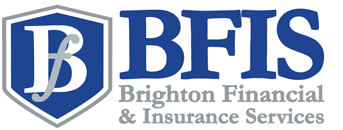California High-End Jewelry Store Insurance

9:00am - 6:00pm Mon-Fri
Will Reply in 15min*
Top 3 Recommended Policies
Index
Understanding Jewelry Store Insurance
Factors Influencing Insurance Premiums
Common Exclusions in Jewelry Store Insurance
Tips for Choosing the Right Insurance Policy
Claim Process for Jewelry Store Insurance
Understanding the Cost of Insurance
Operating a high-end jewelry store in California comes with its own set of challenges, particularly when it comes to protecting valuable inventory. Jewelry is not just a product; it represents significant financial investment and emotional value for both the store owner and the customers. Therefore, having the right
insurance coverage is essential. This article delves into everything you need to know about high-end jewelry store insurance in California, covering types of coverage, factors influencing premiums, and tips for selecting the right policy.
Understanding Jewelry Store Insurance
Jewelry store insurance is a specialized form of coverage designed to protect jewelers from various risks associated with operating a retail business. This insurance typically encompasses several types of coverage tailored to the unique needs of jewelry retailers.
Types of Coverage
When considering insurance for a high-end jewelry store, it is crucial to understand the different types of coverage available. Some of the most common include:
- Property Insurance: This protects the physical assets of the business, including the building, inventory, and equipment, from risks such as fire, theft, and vandalism.
- General Liability Insurance: This coverage protects against claims of bodily injury or property damage that may occur on the premises. For example, if a customer slips and falls in the store, this insurance can cover medical expenses and legal fees.
- Business Interruption Insurance: In the event of a disaster that forces the store to close temporarily, this insurance helps cover lost income and ongoing expenses.
- Jewelry Insurance: This is a specialized coverage that protects the inventory of jewelry against theft, loss, or damage. It may also cover items in transit or on loan.
Why Is Insurance Necessary?
Insurance is not just a legal requirement; it is a crucial safety net for any business. For high-end jewelry stores, the stakes are even higher due to the value of the items sold. A single incident, such as a burglary or natural disaster, can result in substantial financial losses. Insurance provides peace of mind, ensuring that in the event of unforeseen circumstances, the business can recover and continue operating.
Moreover, the jewelry industry is particularly vulnerable to unique risks, including market fluctuations and changes in consumer preferences. For instance, a sudden downturn in the economy can lead to decreased sales, making it essential for jewelers to have financial protection in place. Additionally, the high value of individual pieces means that even minor incidents can lead to significant claims, further emphasizing the importance of comprehensive coverage. Jewelers should also consider specialized endorsements that can enhance their policies, such as coverage for appraisals or protection against fraud, which can provide an additional layer of security in an ever-evolving market.
Furthermore, as the landscape of retail continues to shift with the rise of e-commerce, jewelry stores must also consider the implications of online sales. Cyber liability insurance has become increasingly relevant, protecting against data breaches and online fraud that could jeopardize customer information and the store's reputation. This evolving risk landscape underscores the necessity for jewelers to regularly review and update their insurance policies, ensuring they are adequately covered for both traditional and digital sales channels.

Factors Influencing Insurance Premiums
Understanding the factors that influence insurance premiums can help jewelry store owners make informed decisions when selecting a policy. Several elements come into play, and being aware of these can lead to better coverage options at competitive rates.
Location
The location of the jewelry store plays a significant role in determining insurance premiums. Stores situated in high-crime areas or regions prone to natural disasters may face higher rates due to the increased risk. Conversely, stores in safer neighborhoods may benefit from lower premiums. Additionally, the proximity to emergency services, such as police stations or fire departments, can also influence rates. A store located near these services may receive lower premiums, as the response time in case of an incident is significantly reduced, thereby mitigating potential losses.
Inventory Value
The total value of the inventory is another critical factor. High-end jewelry stores with significant inventory values will generally pay higher premiums. Insurers need to assess the risk associated with the value of items being sold, which can lead to increased costs if the inventory is particularly valuable. Furthermore, the type of jewelry being sold can also affect premiums; for instance, stores specializing in rare gemstones or designer pieces may face higher rates due to the unique risks associated with these items, including their desirability to thieves and the challenges in replacing them if lost or stolen.
Security Measures
Implementing robust security measures can positively impact insurance premiums. Stores that invest in security systems, such as alarms, surveillance cameras, and secure display cases, may qualify for discounts. Insurers view these measures as reducing the risk of theft and loss, which can lead to lower premiums. Moreover, having a comprehensive security plan that includes employee training on theft prevention and emergency response can further enhance a store's profile in the eyes of insurers. Insurance providers often appreciate proactive measures, and stores that demonstrate a commitment to safety may find themselves in a better negotiating position when discussing policy terms and costs.
Claims History
A store's claims history is another influential factor when determining insurance premiums. Insurers will review past claims to gauge the risk level associated with the business. A store with a history of frequent claims may be viewed as a higher risk, leading to increased premiums. Conversely, a clean claims history can help store owners secure lower rates, as it indicates effective risk management practices. Additionally, maintaining detailed records of inventory and security incidents can help owners present a strong case to insurers, showcasing their commitment to minimizing risks and protecting their assets.
Business Experience
The experience level of the business owner can also play a role in insurance premiums. Insurers often favor established businesses with a proven track record of successful operations and risk management. Newer jewelry stores may face higher premiums due to the perceived uncertainty and lack of experience in handling potential risks. However, owners can mitigate this by demonstrating their knowledge of the industry, showcasing any relevant training or certifications, and providing a solid business plan that outlines their strategies for managing risks effectively. This proactive approach can help new store owners negotiate better terms and rates as they build their reputation in the market.
Common Exclusions in Jewelry Store Insurance
While jewelry store insurance provides essential coverage, it is vital to understand the common exclusions that may apply. Being aware of these exclusions can help store owners avoid unpleasant surprises during a claim.
Wear and Tear
Insurance typically does not cover damage resulting from normal wear and tear. Items that degrade over time due to regular use are not covered, so it’s essential for store owners to maintain their inventory properly and provide customers with care instructions. Regular maintenance, such as cleaning and inspecting jewelry pieces, can not only enhance their longevity but also ensure that customers are satisfied with their purchases. Store owners might consider offering maintenance services or workshops to educate customers on how to care for their jewelry, which can foster customer loyalty and reduce the likelihood of returns due to wear-related issues.
Intentional Damage
Any damage caused intentionally by the store owner or employees is usually excluded from coverage. This includes theft or fraud committed by staff members, which can lead to significant financial losses. To mitigate these risks, jewelry store owners should implement robust security measures, such as surveillance systems and background checks for employees. Additionally, fostering a transparent and positive workplace culture can help deter dishonest behavior among staff. Regular training on ethical practices and the importance of integrity in the jewelry business can further reinforce a trustworthy environment.
Natural Disasters
Some policies may not cover specific natural disasters, such as earthquakes or floods, unless additional coverage is purchased. Given California's susceptibility to earthquakes, store owners should carefully review their policies to ensure they have adequate protection against such events. Furthermore, it is wise to create a disaster preparedness plan that includes inventory management strategies and emergency response protocols. This plan can help minimize damage and loss in the event of a natural disaster. Store owners might also consider investing in disaster recovery services or partnering with local emergency management agencies to stay informed about best practices for safeguarding their assets during unpredictable weather events.
Tips for Choosing the Right Insurance Policy
Selecting the right insurance policy for a high-end jewelry store can be daunting, but the following tips can help streamline the process and ensure comprehensive coverage.
Assess Your Needs
Before diving into policy options, it is crucial to assess the specific needs of the business. Consider factors such as inventory value, location, and any unique risks associated with the store. This assessment will guide the selection of coverage types and limits. For instance, if your store is located in a high-crime area, you may need additional coverage for theft or vandalism. Additionally, consider the types of jewelry you carry; certain pieces, like rare gemstones or antique items, may require specialized coverage due to their higher value and unique risks.
Work with an Insurance Agent
Partnering with an experienced insurance agent who specializes in jewelry store insurance can provide valuable insights. An agent can help navigate the complexities of various policies, ensuring that the store owner understands the coverage options and any potential gaps in protection. They can also assist in tailoring the policy to fit your specific business model, whether you operate a brick-and-mortar store, an online shop, or a combination of both. Furthermore, a knowledgeable agent can provide advice on risk management strategies that can help lower premiums and enhance overall security.
Review Policy Terms Carefully
Before signing any policy, it is essential to review the terms and conditions carefully. Pay close attention to coverage limits, deductibles, and exclusions. Understanding these details can prevent misunderstandings during the claims process. Additionally, it is wise to inquire about the claims process itself; knowing how to file a claim and the expected timelines can significantly ease stress during a difficult situation. Some policies may also offer optional endorsements that can enhance coverage, such as coverage for loss of income due to business interruption or damage caused by natural disasters, which are worth considering based on your location and risk profile.
Claim Process for Jewelry Store Insurance
In the unfortunate event of a loss, understanding the claims process is crucial for ensuring a smooth experience. Here’s a step-by-step guide to navigating the claim process for jewelry store insurance.
Notify Your Insurance Provider
The first step in filing a claim is to notify the insurance provider as soon as possible. Most insurers have specific timeframes for reporting claims, so prompt communication is essential. Provide all relevant details about the incident, including the date, time, and nature of the loss. Additionally, be prepared to answer any questions the insurer may have regarding the circumstances surrounding the incident, as this information can significantly impact the outcome of your claim.
Document the Loss
Thorough documentation is vital when filing a claim. Take photographs of any damaged or stolen items and compile a detailed inventory of the affected merchandise. This documentation will support the claim and help the insurance adjuster assess the situation accurately. It’s also beneficial to gather any receipts or appraisals for the jewelry, as these can provide proof of value and assist in expediting the claims process. If applicable, consider obtaining statements from witnesses or security footage that may corroborate your account of the incident.
Follow Up Regularly
After submitting a claim, it’s important to follow up regularly with the insurance provider. This ensures that the claim is being processed and allows the store owner to address any additional information or documentation that may be required. Maintaining a record of all communications with the insurer can be helpful, as it provides a clear timeline of interactions and can assist in resolving any disputes that may arise. Be proactive in your approach; if you haven’t heard back within a reasonable timeframe, don’t hesitate to reach out to inquire about the status of your claim.
Understand Your Policy's Terms
Familiarizing yourself with the specific terms and conditions of your insurance policy is also a critical aspect of the claims process. Different policies may have varying coverage limits, deductibles, and exclusions that could affect your claim. By understanding these details, you can better prepare for potential outcomes and avoid any surprises during the claims process. If there are any terms that seem unclear, don’t hesitate to ask your insurance agent for clarification, as this can help you navigate the process more effectively.
Consider Professional Assistance
If the claims process feels overwhelming or if you encounter difficulties, it may be wise to seek professional assistance. Insurance adjusters or public adjusters can provide valuable insights and support throughout the claims process. They can help ensure that your claim is accurately represented and that you receive the compensation you are entitled to. This can be particularly beneficial in complex cases or when dealing with high-value items, as their expertise can help streamline the process and alleviate some of the stress associated with filing a claim.

Understanding the Cost of Insurance
The cost of insurance for a high-end jewelry store can vary widely based on several factors. Understanding these costs can help store owners budget effectively and make informed decisions about their coverage.
Average Premiums
While it’s challenging to provide a one-size-fits-all figure for insurance premiums, high-end jewelry stores can expect to pay anywhere from a few thousand to tens of thousands of dollars annually. The premium will depend on factors such as inventory value, location, and the types of coverage selected.
Discounts and Savings
Many insurance providers offer discounts for various reasons, including bundling policies, implementing security measures, or maintaining a claims-free history. Store owners should inquire about available discounts to help reduce overall costs.
Regular Policy Reviews
As the business grows and evolves, so too should the insurance coverage. Regularly reviewing the policy ensures that it aligns with the current needs of the store. This may involve adjusting coverage limits or adding new types of protection as the inventory expands.
Conclusion
In the world of high-end jewelry retail, protecting assets is paramount. California high-end jewelry store insurance provides essential coverage against various risks, ensuring that business owners can focus on their craft without the constant worry of potential losses. By understanding the types of coverage available, the factors influencing premiums, and the claims process, jewelry store owners can make informed decisions that safeguard their investments.
Ultimately, investing time and effort into selecting the right insurance policy is a crucial step in ensuring the longevity and success of a high-end jewelry store. With the right coverage in place, store owners can navigate the challenges of the industry with confidence, knowing they are adequately protected.



